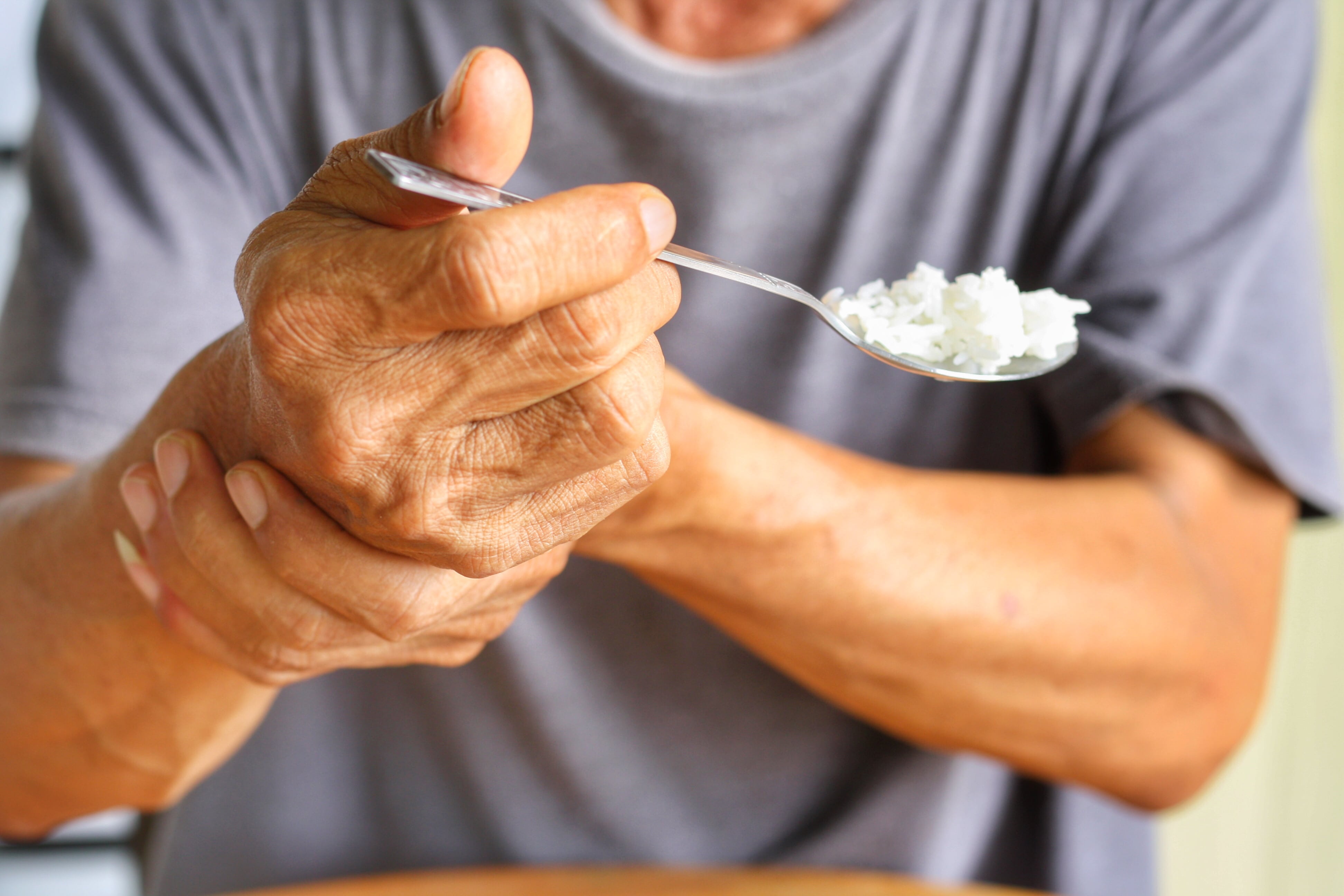Asset Publisher
Parkinson’s Disease: Recognizing Your Loved One’s Symptoms and Receiving a Diagnosis
By Julie Hayes | 12/15/2020

Recently developed body tremors are a common symptom of Parkinson's
According to the Parkinson’s Foundation, more than 10 million people worldwide are living with Parkinson’s Disease, and around 60,000 Americans are diagnosed with the disease each year. Although it is the second most common degenerative neurological disorder after Alzheimer’s, many people are unfamiliar with the signs and symptoms, or confuse them for parts of the natural aging process. If we are caring for an older loved one, it’s important to recognize and understand Parkinson’s so we know when to begin seeking a diagnosis and how to better manage a loved one’s symptoms and care.
Recognizing the signs and symptoms of Parkinson’s
Parkinson’s Disease is a neurological disease which predominantly affects movement, but can additionally affect cognition. It is known for being diverse, with most of those affected by the disease experiencing it in different ways from others with the same diagnosis. Because of this, it can often be hard to identify, as someone with Parkinson’s may not experience the more common symptoms such as rigidity or stooped posture, or these symptoms may be confused for natural aging or other conditions, such as osteoporosis.
Common Parkinson’s symptoms related to movement include:
- Slowness of movement
- Dizziness while moving, often leading to fainting
- Balance issues and instability
- Stooped posture
- Body tremors
- Rigidity or shuffling when walking
- Involuntary movements of the face, arms or legs
- A decrease in handwriting size when writing
- A decrease in natural speaking volume
Non-motor symptoms can include:
- Fatigue
- Difficulty sleeping
- Loss of appetite and weight loss
- Moodiness, depression or anxiety
- Difficulty regulating temperature
- Low blood pressure
However, since these symptoms are present in other diseases and conditions, and it is not uncommon for older adults to experience difficulties while moving, it is important to have a loved one diagnosed before concluding Parkinson’s is the cause.
Getting a diagnosis
Like Alzheimer’s, there is no single test to accurately diagnosis Parkinson’s. A loved one’s physician will likely need to run multiple symptom and diagnostic tests to determine whether or not they have the disease. A loved one may also need to be recommended to a neurologist to receive an accurate diagnosis.
Parkinson’s Disease is most commonly diagnosed in those over the age of 50, but according to the Parkinson’s Foundation, four percent of those diagnosed with Parkinson’s are younger than 50. Those with Young-Onset Parkinson’s generally experience a slower progression of symptoms, but may face different challenges based on whether or not they are still employed and raising a family while managing the disease.
A loved one may be hesitant about being checked for a Parkinson’s diagnosis. However, because many of the symptoms of the disease can be treated through medication, exercise and lifestyle changes, knowing that they have the disease can help a loved one take the first steps to improve their well-being and quality of life.
Managing and treating symptoms
When a loved one is diagnosed with Parkinson’s, their doctor will discuss treatment options and medications with them. There is no cure for the disease at this time, but medication and therapies such as deep brain stimulation can help manage both motor and cognitive symptoms. A loved one’s doctor will be able to offer individualized treatment options based on which symptoms they are experiencing.
Exercise is also key to managing symptoms of Parkinson’s. The Parkinson’s Outcomes Project found that people with Parkinson’s who exercised at least 2.5 hours a week had a better quality of life and experienced slower progression of symptoms compared to those who didn’t. Experts from the Parkinson’s Foundation and Michael J. Fox Foundation recommend the following forms of exercise for those with Parkinson’s Disease:
- Biking
- Running
- Yoga
- Tai chi
- Dance
- Weight training
- Resistance training
Before a loved one engages in exercise, they should first consult with their doctor to determine if it is safe for them to do so. A physician can provide guidance on how much exercise a loved one should do, and the types of exercise that would be most suitable.
Finding resources
The Parkinson’s community is vast, but if a loved one struggles with their symptoms and how other people may perceive their symptoms, they may feel as if they are going through it alone. We may want to consider connecting them to a community of their peers with Parkinson’s Disease for support and to learn how others manage their day-to-day life. If we contact our regional American Parkinson Disease Association, they can help us find support groups and exercise classes a loved one can join in our loved one's area. Caregivers of loved ones with Parkinson’s should also look into Parkinson’s caregiver support and respite programs to maintain their own wellness and ensure they are receiving the assistance they need during their caregiving journey.
There are many other resources we and a loved one can use to learn more about Parkinson’s, get involved in the Parkinson’s community and explore new ways to receive support, including:
